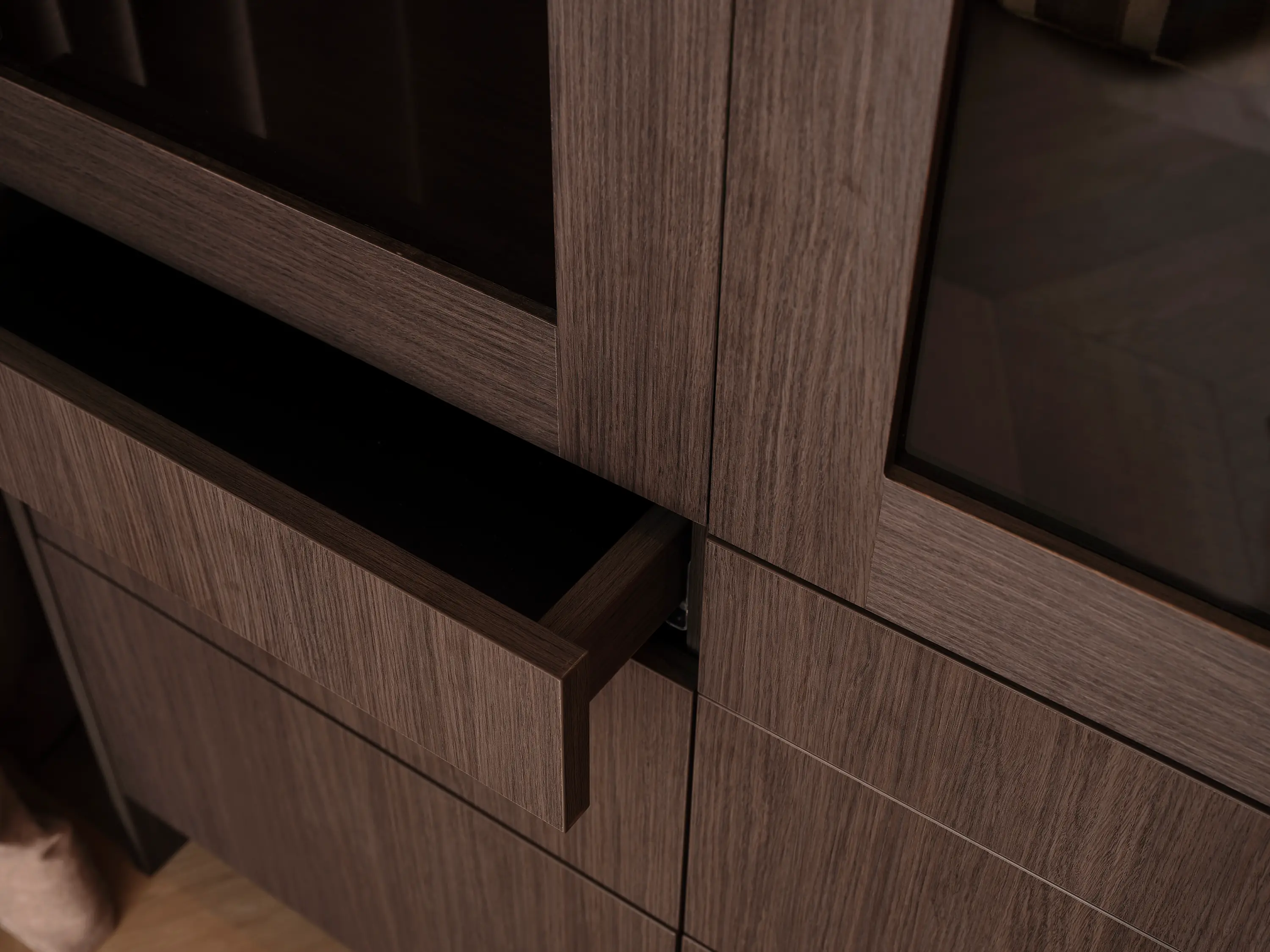How the Wood Industry is Creating a Path to Sustainability
%2520(2).jpeg)
Embracing the Path to a Greener Future
We are currently in an era where an increase in environmental awareness is on the rise. Industries around the world are receiving pressure from the public to ensure that they adhere to sustainable practices. The wood industry taking the next step to a sustainable life. An increase in focus on eco-friendly manufacturing processes and materials, renewable resources, and responsible sources is driving this. Not only does the wood industry demand a more sustainable future, but it also promises a greener future.
The impact within the wood industry.
More attention needs to be paid to the environmental impact of wood processing chemicals and the energy-intensive processes involved in the production of engineered wood products. In tackling these issues, collaboration, innovation, and adherence are required to the environmental standards to promote the preservation of natural resources within the wood industry.
However, there are environmental impacts within the industry. One of the environmental impacts is deforestation, which contributed to 10% of the cause of climate change according to the World Wide Fund for Nature (WWF). Furthermore, deforestation causes an increase in carbon emissions. Trees absorb carbon dioxide, but deforestation releases carbon dioxide and other greenhouse gases into the atmosphere. Illegal logging is another issue that continues in many areas and restricts efforts to produce wood sustainably.
The Importance of Wood in Human Nature
Moreover, the wood industry has been a pillar in human civilization for centuries, providing not only construction materials, but also furniture, paper, and countless other materials that can be produced. It has transcended to an economic value, but for many others, it still also holds a cultural, social, and environmental realm. Such as how in Native American culture it is important to have a deep connection with nature, seeing wood as a symbol of spirituality.
Wood is also more associated with the liking of higher satisfaction in life and positive mental health. Many buildings incorporate wood into their design due to the benefits associated with timber-built architecture, which can enhance individual productivity, optimism, and efficiency.
Furthermore, research conducted by Tsunetsugu et al. (2007) demonstrates that being in a room with 45% wood content results in a decrease in diastolic blood pressure. Which is a positive result in the decrease of stress. It also gave the results that the ratio was the most appropriate, giving a high brain activity and lower pulse rate. Furthermore, wood absorbs moisture when it is too high, and releases it when it is too low. Wood has low thermal conductivity, which means it feels warmer to the touch than other building materials like steel.

The Rise of Sustainability
Many consumers are currently expecting to live more sustainably, and as a result, are also expecting businesses to play a role in the sustainable lifestyle by driving a positive change. This has led to businesses taking their practices into revaluation by adopting more sustainable approaches. As customers buy and demand for more sustainable goods, increases, businesses are under pressure to showcase their responsible sourcing, eco-friendly practices, and commitment to improving the environment.
Sustainable forestry practices
Sustainable forestry practices offer viable solutions to address the challenges within the wood industry. Several methods are employed to promote sustainability, including:
- Selective logging: This practice is commonly used to combat illegal logging and is considered one of the most profitable methods in the timber industry. It involves carefully selecting trees suitable for timber harvesting while leaving others to continue growing in the environment.
- Afforestation: This long-standing practice involves the planting of trees and vegetation in previously unforested areas, contributing to forest growth and restoration.
- Controlled burning: Controlled burning is employed to promote forest regeneration by intentionally setting planned fires. This helps maintain forest health by removing dead leaves, tree limbs, and other debris, while also mitigating the risk of unintentional wildfires
Responsible Forest Management Certification
Certifications serve as a guide for consumers seeking environmentally conscious products. By displaying certification from recognized sustainability organizations, it assures individuals of products manufactured to high ethical standards. The Forest Stewardship Council (FSC), an international non-profit organization, establishes guidelines to ensure responsible forest management within the wood industry. These standards aim to promote biodiversity, restore damaged forests, and safeguard the rights of local communities and indigenous peoples. Companies that attain FSC certification and adhere to its requirements can guarantee customers that the wood they use and supply originates from sustainable sources, contributing to a more sustainable wood environment.
Life Cycle Assessment
The Life Cycle Assessment (LCA) examines a product's entire life cycle and evaluates its environmental impact from production to disposal. LCA studies are conducted to enable businesses to enhance and monitor each stage of production, as it can significantly influence the environment. Consequently, striving for sustainability, these assessments improve product development, marketing strategies, strategic planning, and policy-making.

Collaborations and Partnerships
While the wood industry offers solutions to various challenges, it also faces obstacles, including misconceptions about its sustainability practices. Education and awareness campaigns are essential to debunking myths surrounding wood's sustainability compared to other materials. Such collaborations aim to foster understanding and promote sustainable practices within the industry.
To address these challenges, cooperation among policymakers, business stakeholders, and consumers is essential to establish and implement sustainable practices throughout the wood supply chain. Increased transparency regarding the industry's initiatives, including international treaties and partnerships between governments, non-governmental organizations (NGOs), and industry stakeholders, is crucial in overcoming these challenges. This concerted effort will build trust and credibility among consumers and stakeholders alike.
Wood as a Sustainable Solution
According to the Oregon Forest Resources Institute, forests and wood products serve as carbon sinks, effectively trapping carbon dioxide. Additionally, it is emphasized that wood presents a more sustainable alternative compared to other materials.
Carbon emissions from wood production are less than 100 kg of CO2 per 1,000 kg produced. In comparison, brick production emits 200 kg of CO2 per 1,000 kg, while steel production emits 2,000 kg. Additionally, wood is less detrimental to water and air pollution, as well as solid waste. Among the three materials, wood has the capability to generate energy and ecological resources.
Wood also requires less effort to dispose of and has a shorter production process than steel, plastic, and concrete. Wood-based materials do not decompose when not treated with chemicals and stored in a cool, dry environment with low humidity, resulting in long-term value and the ability to preserve wooden objects while practicing sustainable development. In terms of responsible forestry practices, wood contributes the most to biodiversity conservation compared to other materials, offering broader social-economic benefits. For example, wood recycling can provide a solution to combat deforestation.

Advancements in Wood Technology
New technologies are emerging, such as cross-laminated timber (CLT) and glue-laminated timber (glulam), both of which impart strength, stability, and reliability to wood products. These technologies find primary applications in large timber structures and bulk creations. Additionally, laminated veneer lumber (LVL) is gaining prominence. It is produced by peeling and drying any inherent wood flaws visible through the veneer, resulting in a sleek appearance coupled with exceptional stiffness, strength, and durability.
The popularity of these wood innovations is on the rise, leading to enhanced efficiency in their usage and extending the longevity of wood products due to advancements in wood technology. These methods benefit the circular economy in the long run. Furthermore, the production of CLT, glulam, and LVL produces fewer emissions than other traditional manufacturers such as steel and concrete.
The Promise of the Future
The industry is witnessing ongoing innovations to bolster sustainability. With new techniques like precision forestry and agroforestry, there's a drive to optimize forest management practices for both environmental and economic benefits.
Advancements in technology and methodology now enable countries to more effectively monitor the locations and methods of wood manufacturing and trade. Consequently, there's potential to combat illegal logging and enhance the livelihoods and sustainability of natural resources.
Increasing public awareness of how consumer decisions can support sustainability and empowering producers, including small-scale rural producers, to promote fair trade and sustainable practices are also vital aspects of shaping a more sustainable future.
Conclusion
In conclusion, as awareness of environmental issues grows, consumers are increasingly demanding eco-friendly solutions. Consequently, the wood industry is rapidly embracing sustainability. Despite challenges like deforestation and illegal logging, collaborative efforts among governments, NGOs, and industry stakeholders, coupled with technological advancements, are driving positive change. Through responsible forest management and life cycle assessments, the industry is actively reducing its environmental footprint and innovating for a greener future. The wood industry is poised to play a crucial role in shaping a more sustainable and resilient world.
Upload your design file and get a quote
within days
Quality production with trusted production network.



%20(1).webp)

.webp)







.webp)

%20(1).jpg)
